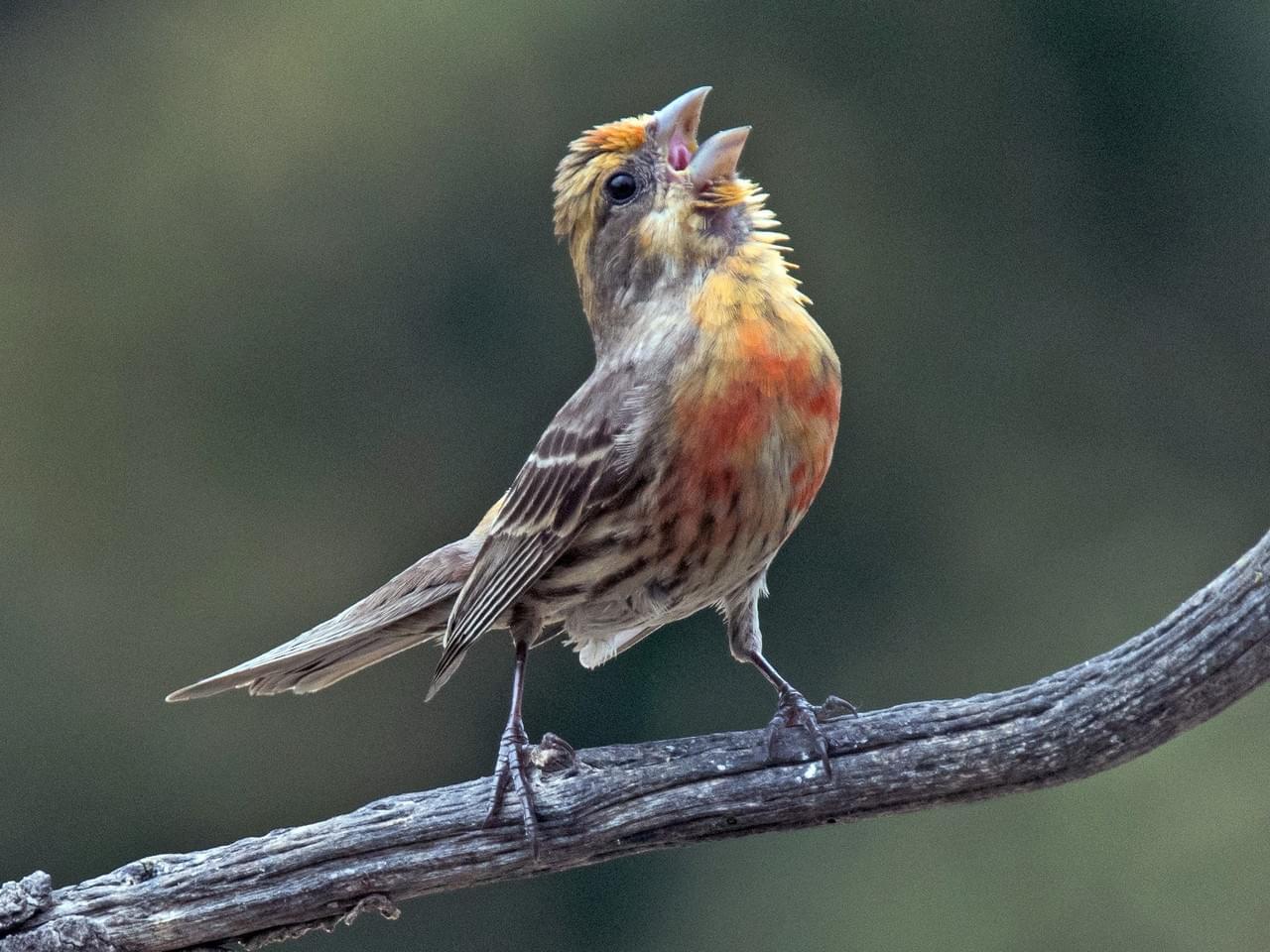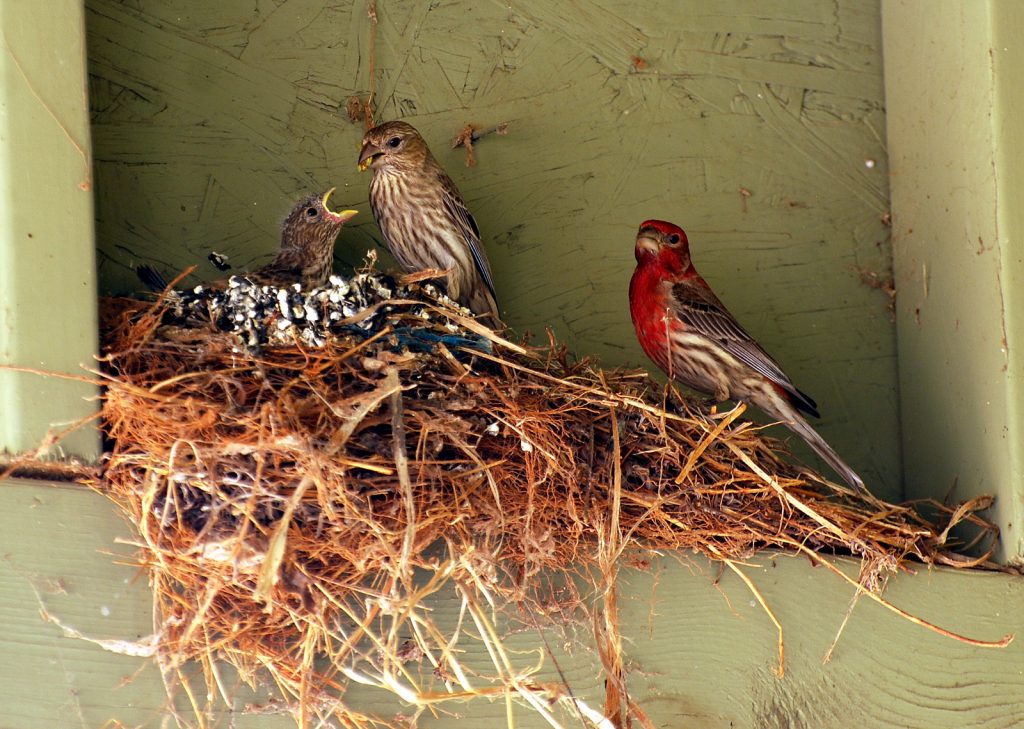House Finch Facts Song Call Nest Eggs Diet Habit
Table Of Content

The House finch (Haemorhous mexicanus) is a North American bird in the finch family. There are estimated to be 40 million house finches across North America, making it the second-most populous finch, just behind the American goldfinch. The house finch and the other two American rosefinches are placed in the genus Haemorhous. They will use ledges or vents on homes, barns, and outbuildings. Hanging planters, dense ivy, and abandoned farm equipment are other popular options. You can also provide nest boxes if you want to attract house finches to your home.
House finch bird vocalization
Both men and women might sing in the course of the breeding season, and males sing year spherical. Adult birds are 12.5 to 15 centimeters (5 to 6 inches) long, with a wingspan of 20 to 25 cm (8 to 10 in). Body mass can range from 16 to 27 g (9⁄16 to 15⁄16 oz), with a median weight of 21 g (3⁄4 oz). In one season, a female House Finch can raise six clutches of eggs, but in most cases, they only raise two per season.
How smart are House Finches?
The house finch is understood to break orchard fruit and devour commercially grown grain, however is usually thought of as an annoyance somewhat than a major pest. To keep away from prosecution beneath the Migratory Bird Treaty Act of 1918, distributors and house owners launched the birds. Breast and stomach feathers could also be streaked; the flanks normally are. However, their mild nature and bright red feathers make them welcome additions to the Eastern community. They travel in flocks and take their migration day by day.
Food
Their distribution is strongly correlated with the presence of bird feeders. While often rare, these songbirds sometimes even raise a batch of eggs well into August. House Finches that live in warmer climates often raise more than two broods per season, while those that live in cooler parts of North America only produce two to three. Some House Finch eggs are white with black specks, while others may look pale blue with black and purple specks.
Ponderings on partner and problematic birds - Times Record News
Ponderings on partner and problematic birds.
Posted: Wed, 01 Feb 2023 08:00:00 GMT [source]
If you’re a fan of the House Finches you may be wondering if they nest in birdhouses. These birds are monogamous and their nests are cup-shaped with finer materials used to line it. They often nest outside of birdhouses and their eggs are laid between March and August. They lay three to six pale speckled eggs and both parents feed the chicks which hatch after days. Nests can remain active throughout the summer with females laying multiple clutches during breeding seasons. The House Finch is closely related to the Cassin's Finch and the Purple Finch, and in fact, there are places in Washington where all three species can be found.
House Finch Nesting
House finches generally nest in spring and summer, between March and August. These birds have long nesting seasons because they often lay more than one clutch. “American goldfinches are much later nesters than just about anything else you have in your yard,” LeBaron said.
House Finch Range and habitat

House Finches do not display a strong territorial instinct but pair-mates may nest close together. Females make a cup-like nest out of grass plant stems hair and cotton. If you live in the East and love watching finches at your feeders, thank a 1940s pet shop owner (and the National Audubon Society for banning the sale of these birds). Even after leaving the nest, the male House Finch continues to feed the flock even after the adult female bird has started on a new clutch of eggs.

That’s partly due to the cheerful red head and breast of males, and to the bird’s long, twittering song, which can now be heard in most of the neighborhoods of the continent. If you haven’t seen one recently, chances are you can find one at the next bird feeder you come across. A western species until the 1940s, the house finch was introduced to the east by an unethical pet dealer, where they quickly spread to all eastern states. Find out facts about the house finch nest, eggs, range, habitat and song. Cardinals are beautiful and colorful birds that are often attracted to bird feeders.
Flocks roost together, and break off into smaller groups to forage for food. Flocks of House Finches are widespread at bird feeders in the course of the non-breeding season. Some flocks might keep collectively by the breeding season as nicely, and birds will use bird feeders year spherical. Male coloration varies in-depth with the seasons and is derived from the berries and fruits in its weight-reduction plan. As a result, the colors range from pale straw-yellow by vibrant orange (both uncommon) to deep, intense red.
The backyard birds of Will County - Forest Preserve District of Will County
The backyard birds of Will County.
Posted: Wed, 26 Feb 2020 08:00:00 GMT [source]
They often nest in plant boxes hanging planters or roof overhangs. Their nests are typically open-cup shaped and the females lay between two and six blue-white speckled eggs. The eggs hatch after 12 to 16 days and the chicks fledge between 11 and 19 days.
Female finches build their nests in the springtime, but courtship often starts in the winter. House Finches are familiar birds of human-created habitats including buildings, lawns, small conifers, and urban centers. In rural areas, you can also find House Finches around barns and stables. If you are interested in attracting the house finch to your backyard or want to know more about the bird's nesting habits and behavior, read on! We will discuss the most commonly asked questions about house finch nesting in this complete guide. They love thistle and sunflower seeds if you want to attract a House Finch to your backyard birdfeeder.
Comments
Post a Comment